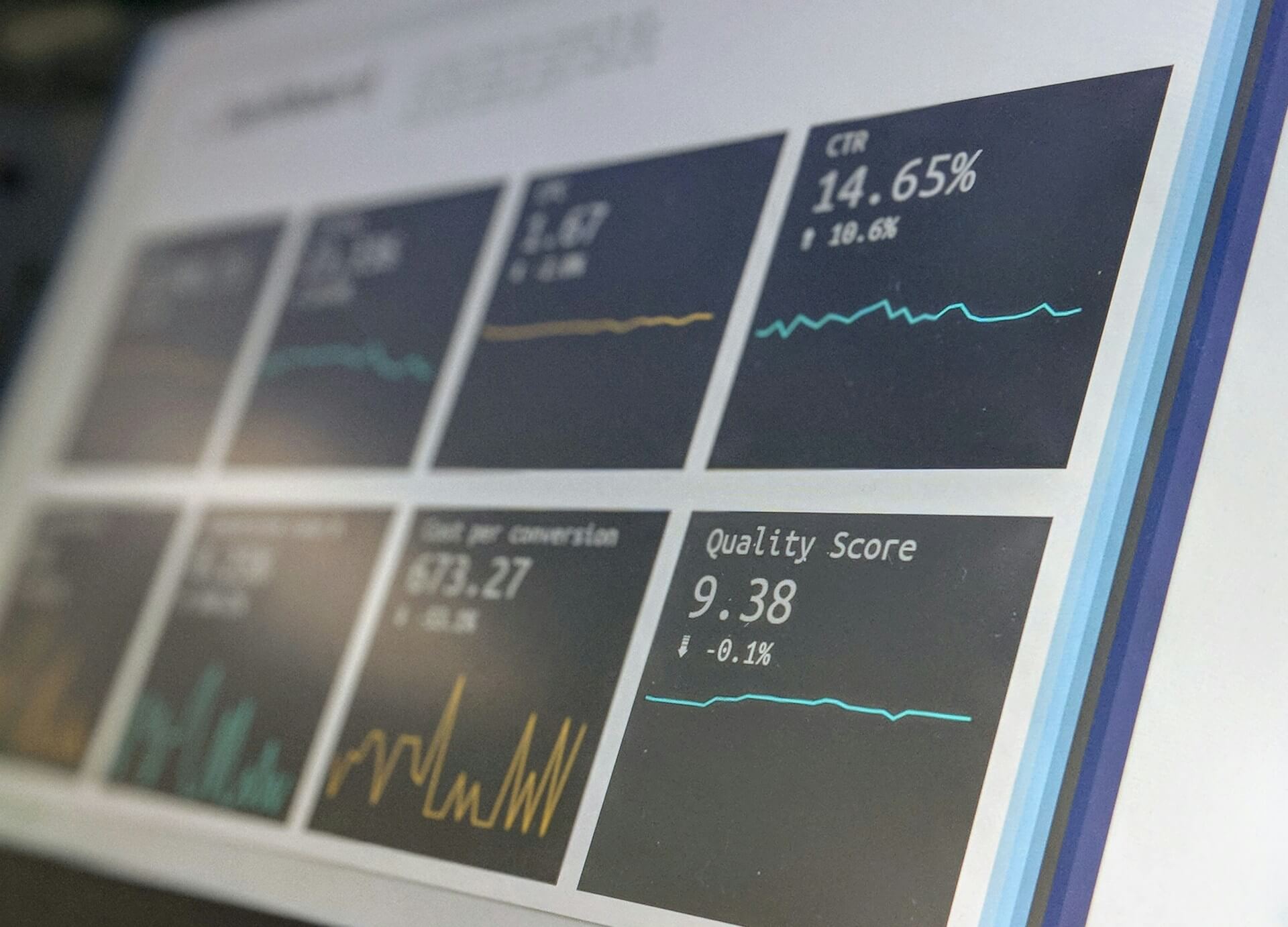
How to Create Stunning Project Status Reports in Confluence
Struggling to keep everyone updated on the project status? We’ll show you how to easily

Every new project at work is like an empty canvas. While the fresh start can be thrilling, it can also be daunting and drain your time.
Templates in Confluence pages act as a pre-sketched outline, giving you a head start while allowing plenty of room for creativity. Let’s explore why custom templates are essential and how to create them effortlessly.
Confluence templates are pre-defined page layouts that help streamline the creation of consistent and organized content within your Confluence workspace. Instead of starting every page from scratch, templates provide a structured framework that you can customize to fit your specific needs. They save time, ensure uniformity across pages, and help maintain a professional look and feel throughout your Confluence site.
Whether you’re setting up meeting notes, project plans, or documentation, Confluence templates can simplify your workflow, making it easier to keep your team on the same page and ensure all necessary information is captured efficiently.
There are two primary types of Confluence templates:
Global templates are available across all spaces in your Confluence instance. These templates are ideal for company-wide standards, such as style guides or project kickoff templates. Only Confluence administrators can create or edit global templates.
Space templates are specific to a particular space. They are perfect for teams or departments with unique needs. Space administrators can create and modify these templates.
Before diving into creating your own template, ask yourself if you truly need one. Confluence already offers over 100 pre-made templates, each designed to cater to various needs. Start by exploring these existing templates to see if any of them fit your requirements.
Confluence templates cover a range of categories like Business Strategy, Design, Human Resources, Project Planning, Software Development, and Teamwork.
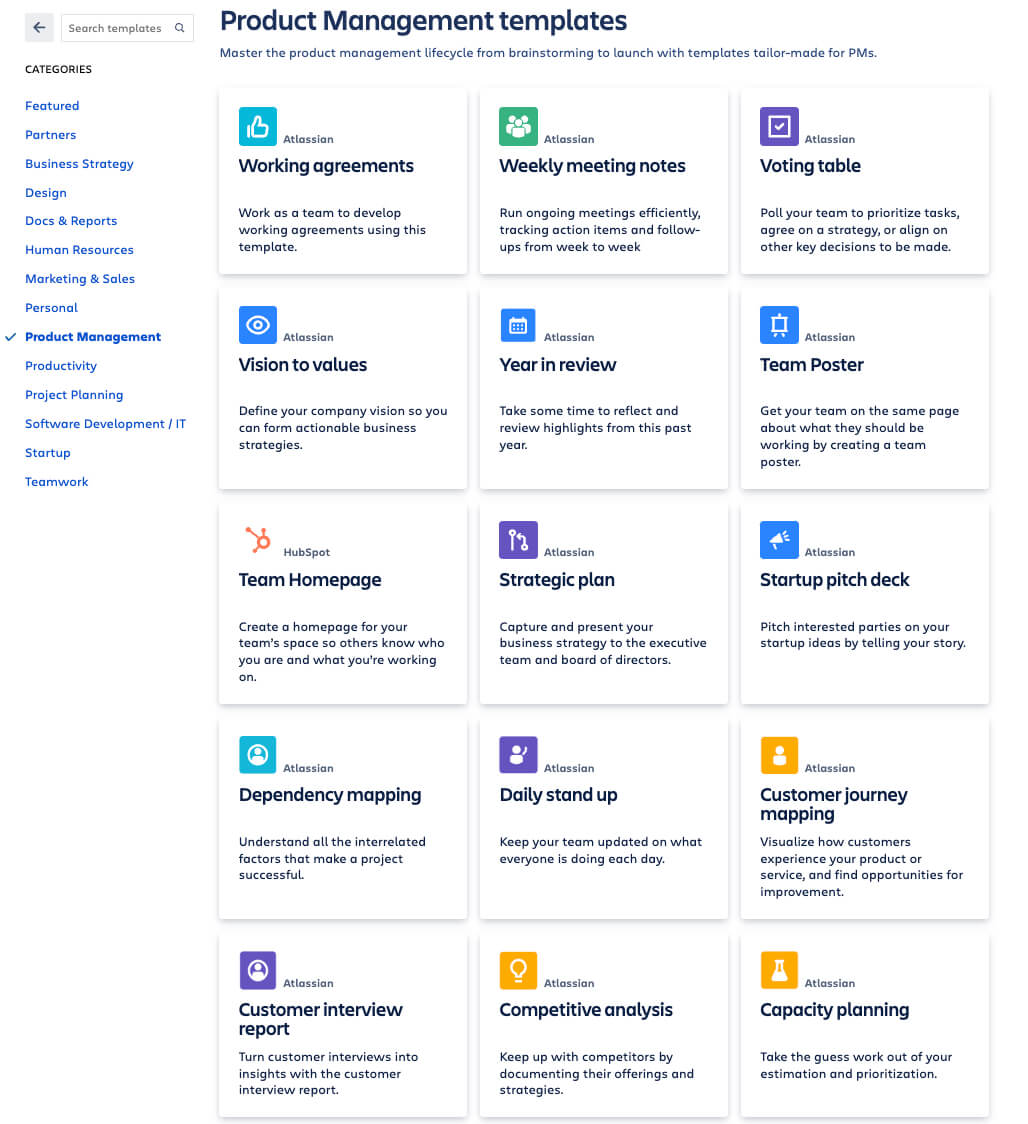
When kicking off a new Confluence page, just pick a template that suits your needs. Hover over the template to get a sneak peek of the layout.
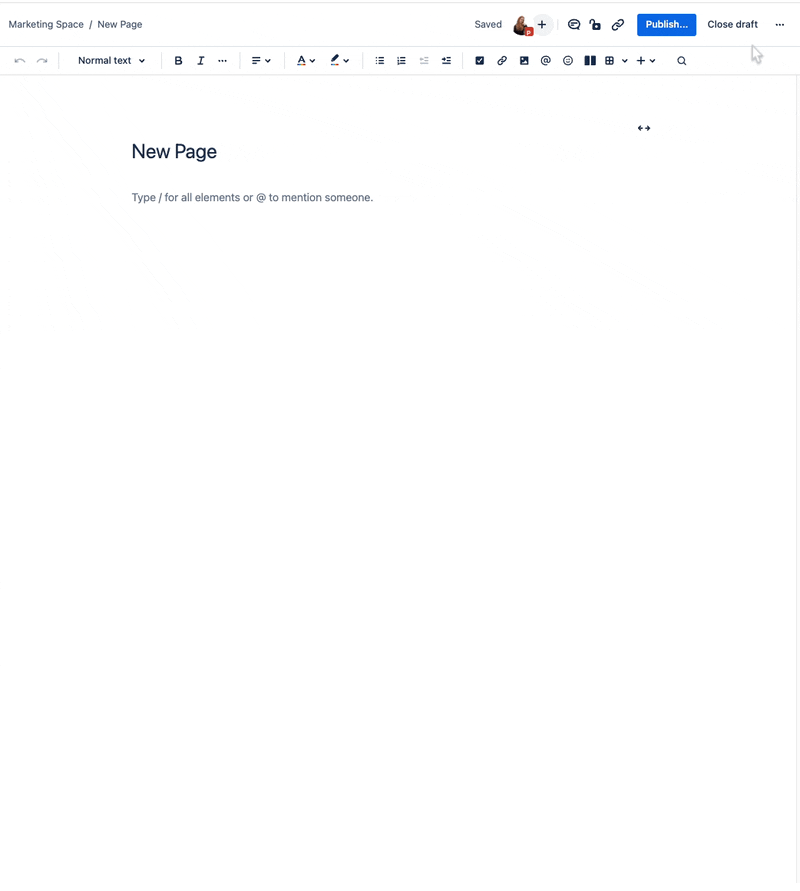
If you find that none of them do, it might be time to create your own.
Here’s when you should consider making a custom template:
Repetitive Content: If the content you’re dealing with is something your team uses frequently, a template can save a lot of time.
Specific Needs: When your requirements are unique and cannot be met by existing templates, creating a custom template is the way to go.
Branding and Consistency: To maintain a consistent look and feel across your Confluence space, a custom template can be invaluable.
Complex Documentation: For complex projects that require detailed documentation, custom templates can include specific sections, placeholders, and variables tailored to your project needs.
Because it’s the more common template, we’ll walk you through the process of creating a space template in this article.
Navigate to the Space Settings
Go to the space where you want to create the template. Click on “Space Settings” in the sidebar.
Select Content Tools
In the Space Settings, navigate to “Look and Feel” and click on “Templates”.
Create a New Template
Click on the “Create new template” button. This will open the template editor.
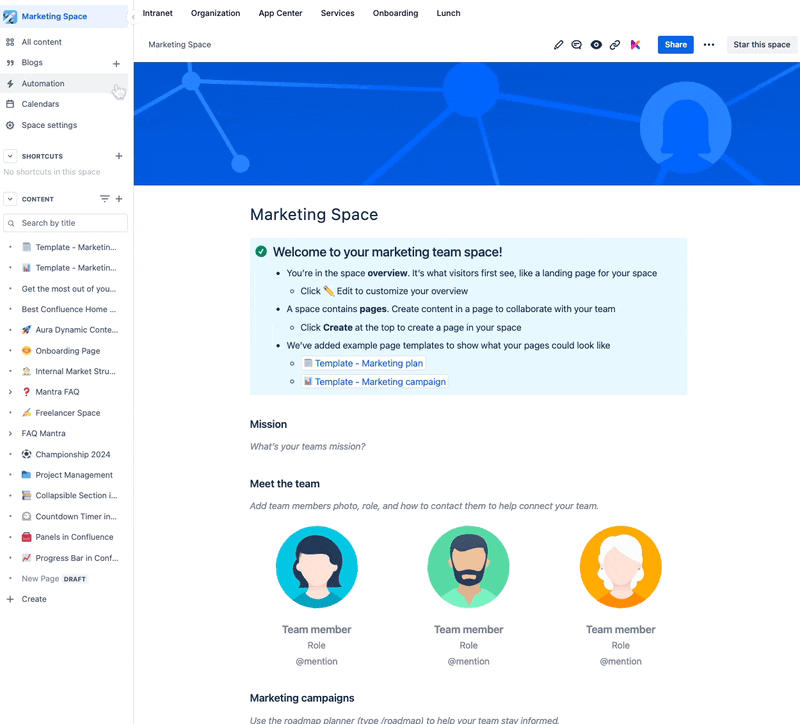
Use the editor to design your template. Add headings, text, variables, placeholders, and macros as needed.
Make the most of Confluence’s handy layouts and table features to organize your content. Setting up a neat layout with different columns can spruce up your template, making it look sharp and user-friendly.
The pages can be designed in either full width or fixed width, with all content neatly centered. Opting for a fixed width gives off a sleek and modern vibe. If you’re looking for multi-column layouts, just throw in the “/” command, or go for tables if you need that extra flexibility. Layouts work wonders for organizing content, while tables excel at sorting and numbering.
When it comes to structuring your content, think pyramid style. Pop the key details up top (think H1 and H2) and then smoothly cascade down with additional sections.
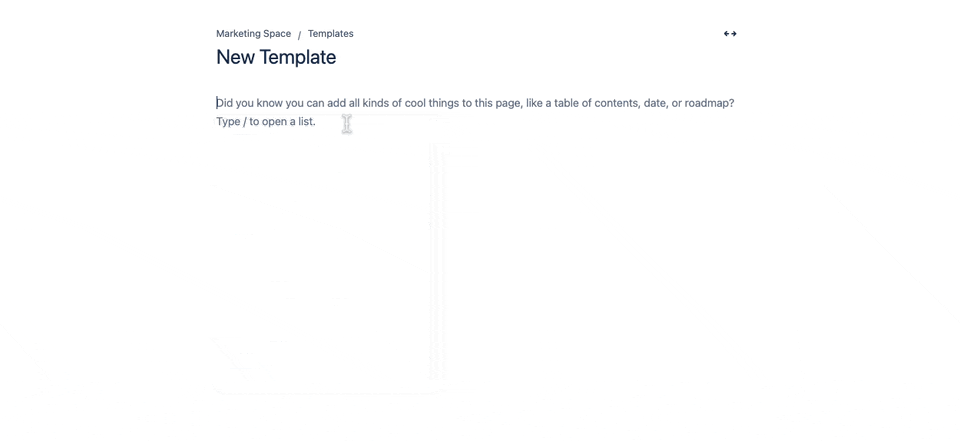
To make your Confluence templates visually appealing, you can simply add built in Confluence macros. This will quickly make your templates look much more functional and user-friendly.
Here’s how to integrate some of the most useful macros into your Confluence templates:
The Status Macro lets you add colored lozenges to indicate the status of tasks or projects. This is great for project management templates where you need to visually represent the progress or completion status.
Type /status in the editor.
Choose the color and text for the status lozenge.
Add it to relevant sections to highlight task statuses.
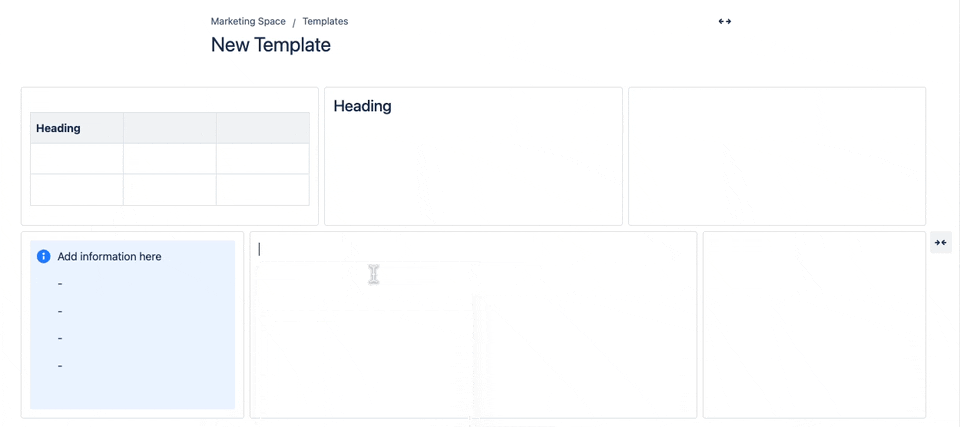
The Panel Macro allows you to create colored panels to highlight important sections of your page. Use this to make key information stand out, such as critical updates or important notices.
Type /panel in the editor.
Customize the panel’s background color, border, and title.
Use it to frame essential content and draw attention to significant details.
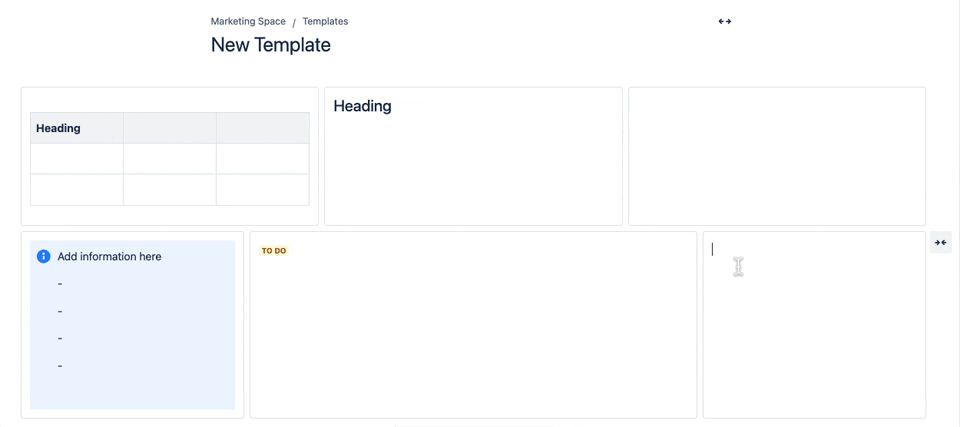
We love diving into the details! When setting up your template and theme, it’s a great idea to think about including the Table of Contents macro. This handy tool creates a list of all the headings on your page that updates automatically. It’s especially useful for lengthy documents, making it easy for readers to navigate to specific sections in a snap.
Type /table of contents in the editor.
The macro will automatically generate a table of contents based on the headings (H1, H2, etc.) on the page.
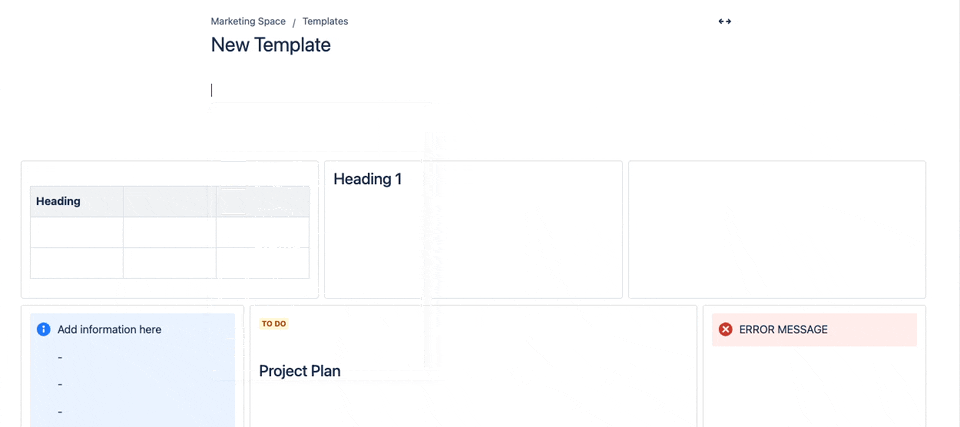
Of course, that was just a brief overview of some of the most commonly used Confluence macros. For instance, when setting up a meeting template, it’s a good idea to include the date macro, page properties, attachments, an expand section, or a list to keep track of action items.
By integrating these built-in macros into your Confluence templates, you can create dynamic and interactive documents that enhance collaboration and streamline your workflow.
Variables make your template dynamic and customizable. When someone creates a page from a template with variables, they’ll fill out a form with text fields or lists for each variable. Variables ensure consistency and efficiency by allowing users to fill out information once, which then automatically populates across all instances of that variable in the template.
To add a variable:
Type /variable in the editor and hit Enter.
Edit the Variable:
Select the variable token, then click on the pencil icon to edit.
Enter a name for the variable.
Choose the type of input: Text, Multi-line Text, or List.
Text: For single-line inputs.
Multi-line Text: For inputs requiring multiple rows and columns.
List: To create a drop-down menu with predefined options.
Save the Variable to apply your settings.
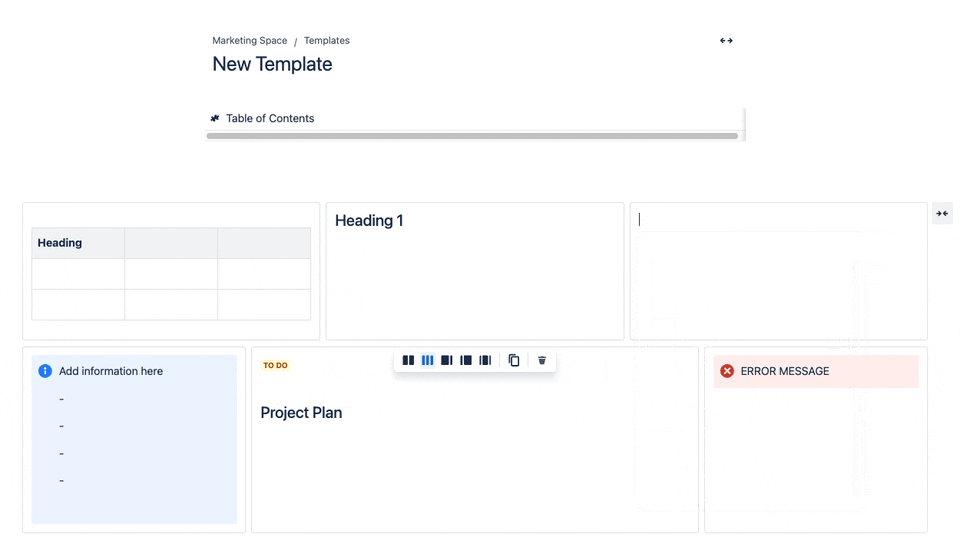
Imagine you’re creating a new hire onboarding template.
You might include variables for:
New Hire Name
Job Title
Department
Manager
Start Date
When using the template, it will look like this ->

Placeholders within Confluence templates serve as helpful instructions, indicating users the required information and its placement. These placeholders are displayed in a greyed-out format during template editing but remain invisible in view mode. They effectively direct users on input requirements without adding unnecessary clutter to the final document.
Type /placeholder where you want the instructional text to appear.
Hit Enter to insert the placeholder.
Enter Your Placeholder Text:
This text should clearly explain what users need to input.
Hit Enter Again to finalize the placeholder.
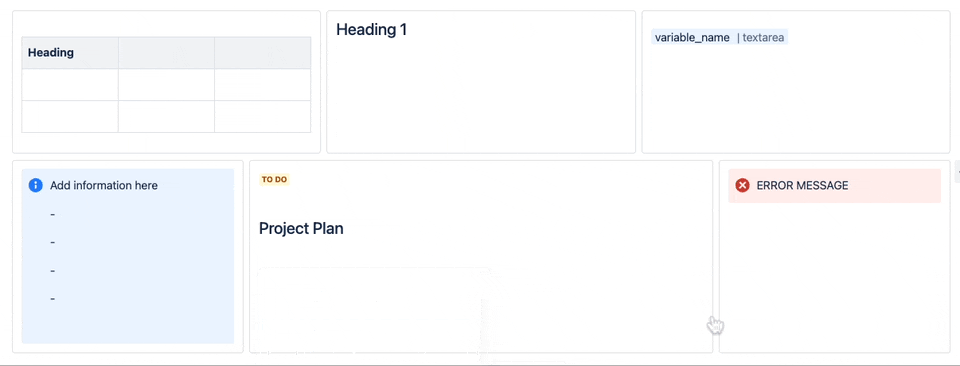
When creating Confluence templates, both placeholders and variables are powerful tools that serve different purposes. Knowing when to use each can enhance your templates, making them more user-friendly and efficient.
When to Use Each:
Placeholders are great for providing guidance and visual cues. Use them for guidance and static content. They are perfect for sections that need detailed instructions, like “Enter key discussion points here” in a meeting template or “Describe project scope here” in a project plan template.
Use Variables for dynamic, repeated information. They are best for fields that need to be consistent throughout the document, like “Team Name,” “Date,” or “Manager.” For example, in an onboarding template, variables for “Employee Name” and “Start Date” can ensure these details are entered once and used consistently across the template.
Another best practice for creating Confluence space templates is to use labels. When you add labels to your templates, every page created from that template will automatically inherit those labels. This not only saves time but also enhances searchability and reporting capabilities. Labels can significantly improve the efficiency of finding related pages and generating reports. For instance, if you have a template for project documentation, adding a “project-doc” label allows you to quickly compile a list of all project documentation pages.
How to Add Labels to Templates
Click on the ellipsis (three-dot menu) at the top right.
Select “Add labels.”
Type in the labels you want, separated by spaces.
Click “Add” and then “Close.”
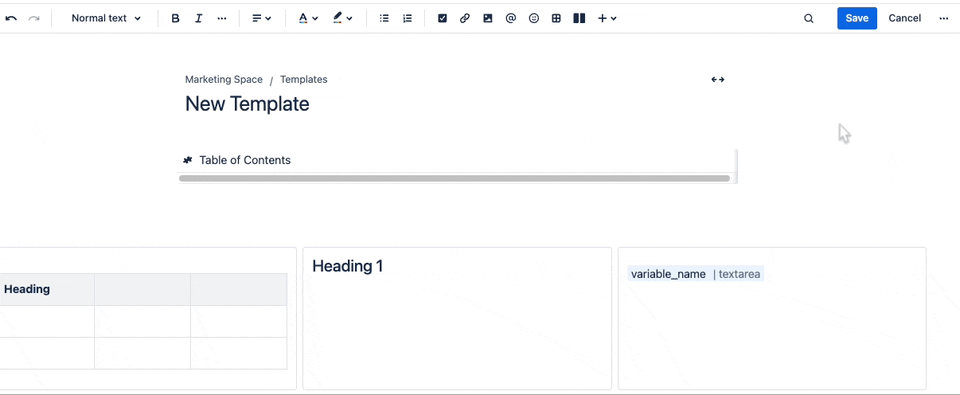
So far, we have already given you a few tips on how to create clearly laid out Confluence templates. However, the functionality of built-in functions and macros in Confluence is limited. That’s why it’s worth considering third-party macros.
These macros provide additional functionalities and customization options that are not available out of the box. They can help you create more engaging, interactive, and visually appealing pages. One powerful example is the Aura Content Formatting Macros, which offer a suite of tools designed to enhance the look and functionality of your Confluence templates.
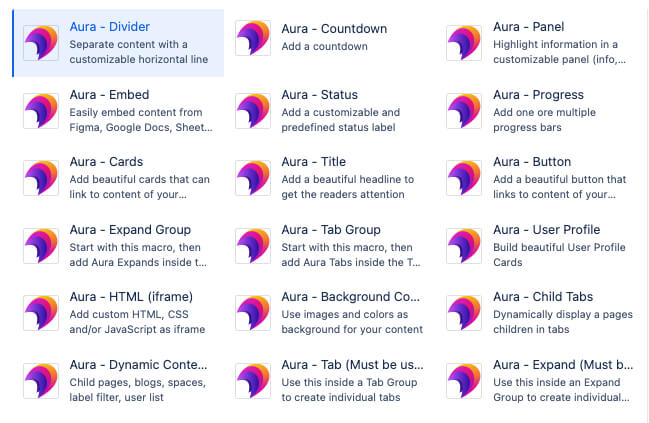
Aura offers you a total of 16 macros that will elevate your template. From Confluence Cards to visually captivating background colors and interactive status features, Aura has got you covered. Whether you need HTML embeds, progress bars, enhanced panels, expandable sections, or tabs, integrating them with Aura is a breeze. Regardless of the macros you choose to incorporate, the process remains seamless and straightforward.
Install the Aura Macros: First, ensure that the Aura Content Formatting Macros are installed in your Confluence instance. You can find them on the Atlassian Marketplace.
Insert Aura Macros: Use the “/” command in the editor of your Confluence template to bring up the macro menu. Start typing the name of the Aura macro you want to add, such as “Aura Button” or “Aura Cards,” and select it from the list.
Customize the Macro: Configure the macro settings to fit your template’s needs.
Save: After adding and configuring the macros, save your template.
Aura Cards: Use these to create visually appealing summary cards that highlight key information. Perfect for dashboards or landing pages.
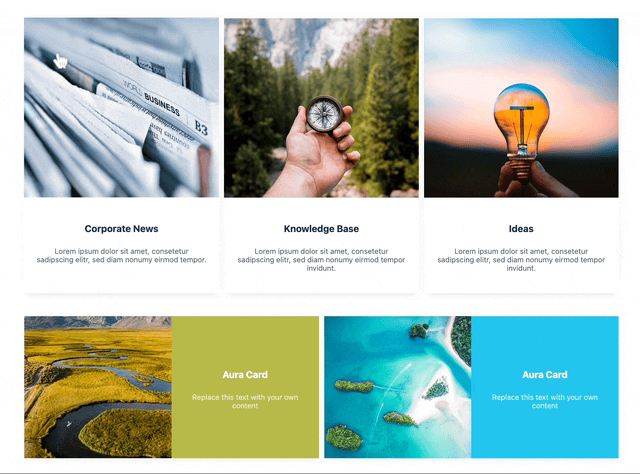
Aura Progress Bars: Track project progress visually with colorful progress bars. This helps teams stay motivated and informed about project status.
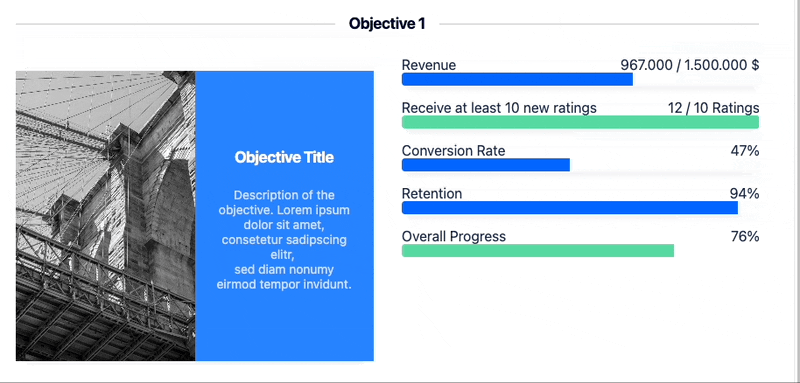
Aura Expand: Use expandable sections to manage large amounts of content in a compact and user-friendly way. Ideal for FAQs or detailed project documentation.
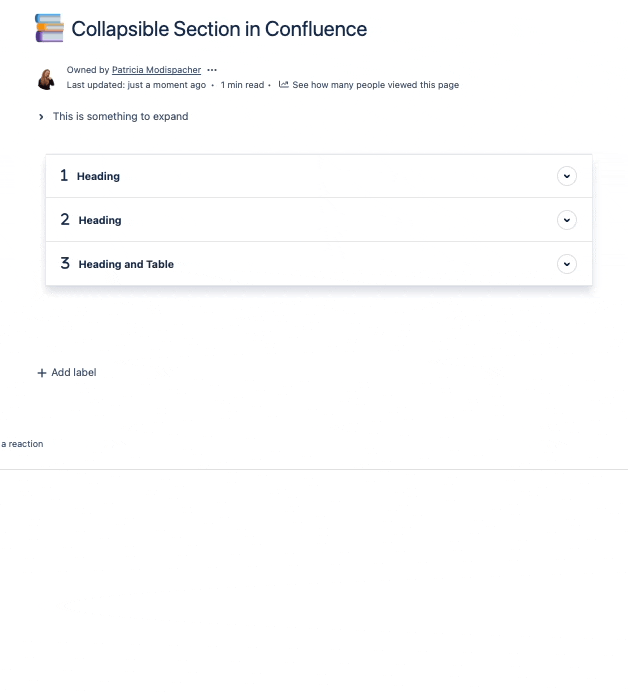
Aura Status: Incorporate interactive status macros to give real-time updates on tasks or project phases.
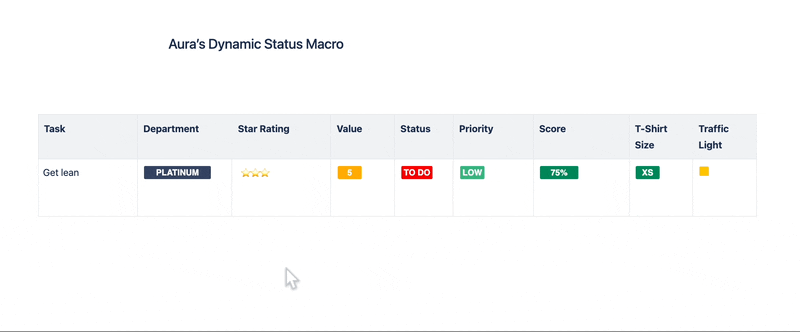
Confluence templates can be individually designed and edited. Here are some specific examples of individual templates, along with explanations of why and when to use them:
An SEO Article Briefing template ensures that all necessary elements for search engine optimization are covered in your articles. It helps content creators in your Marketing team to structure their articles to maximize visibility and ranking on search engines.
When to Use It: Use this template when creating content that needs to be optimized for search engines, such as blog posts, landing pages, or product descriptions.
Key Features:
Focus Keyword: Identify the primary keyword for the article.
Secondary Keywords: List of additional keywords to be included.
SEO Snippet: A short, compelling summary for search engine results.
Target Audience: Description of the intended audience.
Content Structure: Outline of headings and subheadings.
Internal Links: Links to other relevant pages on your site.
External Links: Links to authoritative external sources.
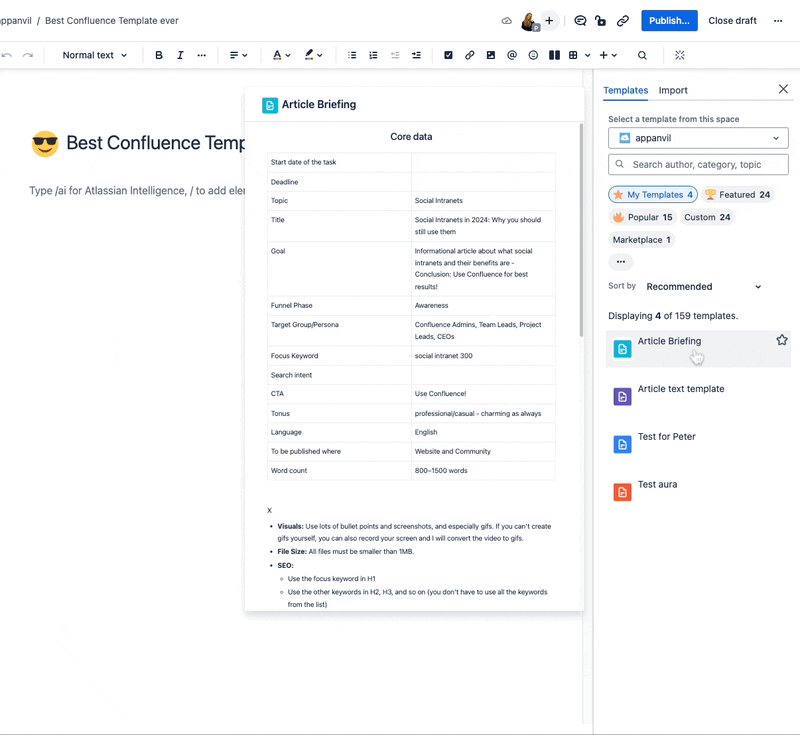
A Meeting Agenda template helps structure your meetings, ensuring that all important topics are covered, and time is managed efficiently. It also provides a clear outline for attendees to follow, keeping the discussion on track.
Use this template for any regular meetings, such as weekly team meetings, project kick-offs, or client discussions.
Key Features:
Agenda Sections: Include sections for each agenda item with estimated time allocations.
Attendee List: A space to list all attendees.
Notes Section: Areas for taking notes during the meeting.
Action Items: A place to record tasks and responsibilities assigned during the meeting.
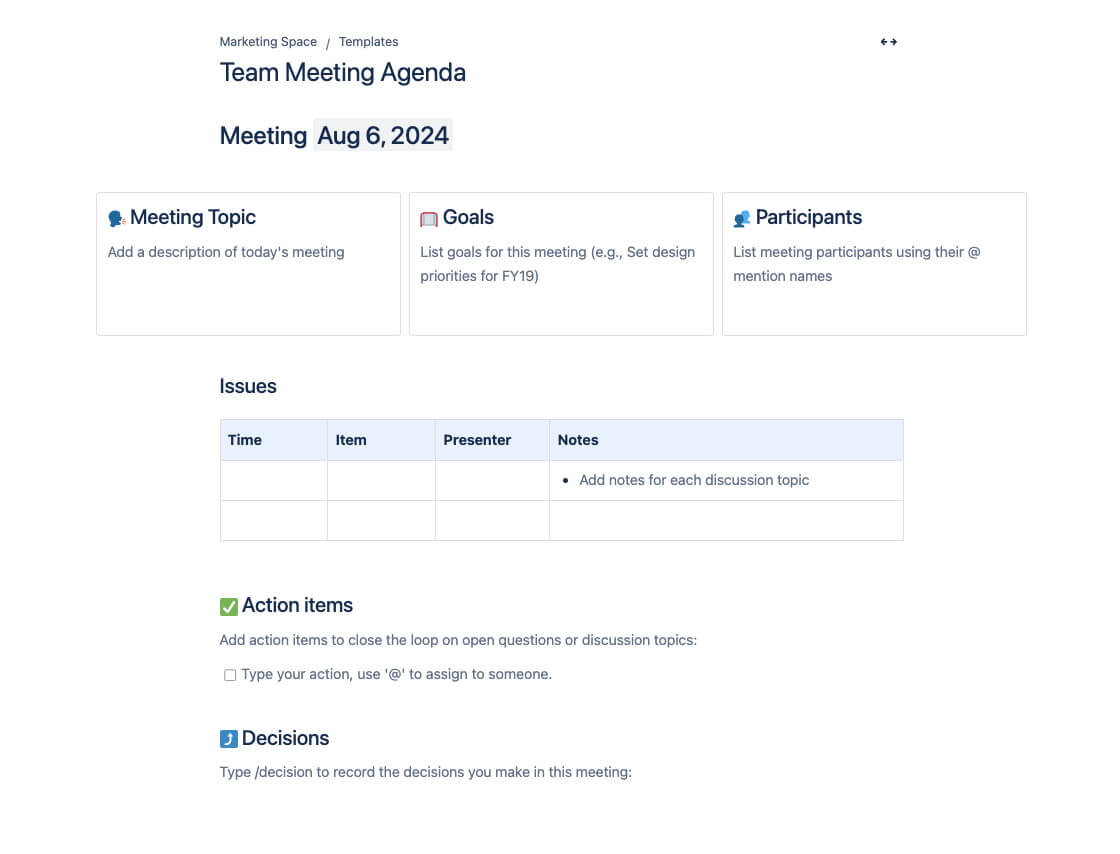
Confluence provides a template for meetings, which is fantastic! However, customizing the template to suit the unique needs of various teams or departments can truly work wonders in the long run. It may take a bit of effort initially, but the time invested will pay off with swift and efficient results down the line.
An Article Text template provides a consistent format for writing articles, ensuring that all necessary elements are included and properly structured.
Use this template when drafting any type of article, such as blog posts, news updates, or opinion pieces.
Key Features:
Title: Clear and engaging title for the article.
Text extract: A good text extract of how you want it to be is the perfect example for each new article.
SEO Snippet: An example SEO Snippet
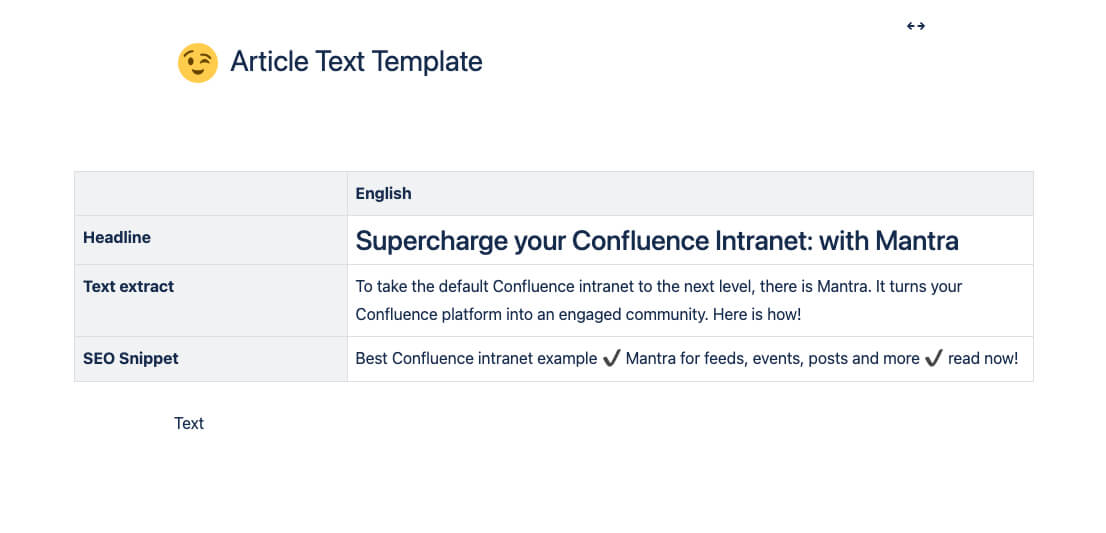
Creating custom templates in Confluence is a powerful way to enhance productivity, ensure consistency, and streamline your workflows. By following these tips and utilizing advanced features, you can create templates that meet your organization’s unique needs.
Have fun designing your templates and don’t forget to check out the Aura macros for added functionality and visual appeal. Start your free Aura-trial today and see the difference!
Wanna talk to our experts first? Then simply book a free demo and we’ll guide you through.
Supercharge your Confluence

Struggling to keep everyone updated on the project status? We’ll show you how to easily

Tired of endlessly scrolling through Confluence to find what you need? We’ll show you how

The right intranet can make the difference if you thrive your simply survive. We’ll show

You are currently viewing a placeholder content from Wistia. To access the actual content, click the button below. Please note that doing so will share data with third-party providers.
More Information